Managing the Internet of Things in some ways is like managing an ant colony. Like ants, each device in a network has a mission, and in many cases those devices are legion.
Connected device management is crucial for accessing and maintaining devices that perform tasks and data reporting in mission critical applications. These devices must be monitored for security and uptime and updated with patches and enhancements. To enable administrators to perform these tasks, deployments in the Internet of Things need to be integrated with IoT application management tools.
For example, if a device goes offline, an administrator will need to be able to access that device for troubleshooting. This is just one example, but it is an important one. The offline device could be many miles away, or installed inside an enormous industrial tank, or on top of a light pole. And it may be no less important than a device installed in a data center down the hall.
In this blog post, we will provide additional insights on IoT device management, including use cases that illustrate the critical importance of secure, high-quality tools for remote IoT connection management, monitoring, automation and maintenance.
What Is IoT Device Management?
 IoT device management is the ability to remotely access, diagnose and manage the functionality of your deployed IoT devices. There are several key factors that illustrate why this capability is critical.
IoT device management is the ability to remotely access, diagnose and manage the functionality of your deployed IoT devices. There are several key factors that illustrate why this capability is critical.
These factors include the size of your network, whether the devices are physically accessible and how widely dispersed your devices are, geographically. Regardless of their number or location, you will need to check on those devices and periodically update their capabilities and intelligence with firmware updates, or download security patches to make sure they are up-to-date, secure and in compliance.
 Use case examples:
Use case examples:
- You have many devices — dozens, hundreds, or thousands — and need to gain secure access to them from a remote or central location for firmware updates and insights on the health of those devices.
- Your devices are deployed in mobile, hard-to-reach, or physically dangerous locations. Digi IoT devices, for example, are installed in buses, trains, city intersections, wells, mines, the tops of street lights and traffic lights, bridges and dams, grain silos, water treatment plants, manufacturing facilities, industrial tanks and other remote applications.
- You need to be alerted to certain conditions, such as a device unexpectedly going offline, an attempted security breach or the need for a battery to be replaced.
- You want to use your human resources wisely, and send personnel on site visits only when needed, not for unnecessary routine checks when all is well.
- Your devices are installed in mission critical applications, and downtime or failure can cost your business dearly in lost revenue or fines.
 Digi Remote Manager®, provides these insights and capabilities from a “single pane of glass.”
Digi Remote Manager®, provides these insights and capabilities from a “single pane of glass.”
Without this critical functionality, IoT network managers cannot proactively monitor their deployed network of devices or keep their security up-to-date, which can leave the devices vulnerable, out-of-date, out-of-compliance and unreachable.
Digi Remote Manager 101: Adding Devices
Digi Remote Manager® enables you to manage any number of devices individually and in groups. Learn more in our How-To video.
Watch Video
The Basics of IoT Device Management
 IoT gateway device management, there are several different steps involved in integrating a device into a network, monitoring it and ensuring its ongoing health and uptime.
IoT gateway device management, there are several different steps involved in integrating a device into a network, monitoring it and ensuring its ongoing health and uptime.
Provisioning
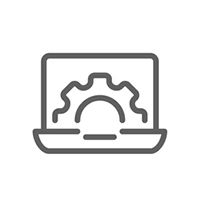 Device provisioning is the first step in IoT management. This step is for first-time setup in order to create an account, set up the network connection and so on. Provisioning is similar to configuration, as we will discuss. Both of these processes involve customizing your device. Provisioning modifies the device from its original, off-the-shelf settings to those required for the device to be integrated into your network. Configuration can be performed anytime.
Device provisioning is the first step in IoT management. This step is for first-time setup in order to create an account, set up the network connection and so on. Provisioning is similar to configuration, as we will discuss. Both of these processes involve customizing your device. Provisioning modifies the device from its original, off-the-shelf settings to those required for the device to be integrated into your network. Configuration can be performed anytime.
Digi Remote Manager enables zero-touch configuration for first time provisioning for rapid, accurate, and cost-effective on-site installation, as well as remote configuration anytime updates are needed.
Authentication
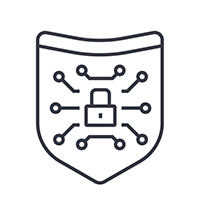 Authentication is the process of confirming a device’s identity as it is enrolled into the IoT system, and authenticating users at login.
Authentication is the process of confirming a device’s identity as it is enrolled into the IoT system, and authenticating users at login.
Proper IoT device identity management and authentication assure that only authorized devices are enrolled, to prevent intrusions and keep proprietary information confidential.
To enable authentication, administrators establish device and network security settings so that access attempts can be authorized or blocked.
Configuration
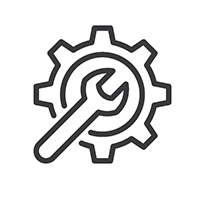 IoT configuration management, as we discussed in the provisioning section, is a method of customizing the functionality of your IoT device. For example, you can add additional sophistication and intelligence to a device, optimize its features with additional code, or revise its settings for new requirements.
IoT configuration management, as we discussed in the provisioning section, is a method of customizing the functionality of your IoT device. For example, you can add additional sophistication and intelligence to a device, optimize its features with additional code, or revise its settings for new requirements.
Because devices and networks are like living organisms, they often need further configuration beyond that initial provisioning phase. It is important to be able to configure one or more devices efficiently, securely and remotely, anytime the need arises. Digi Remote Manager offers the ability to configure any number of devices at one time — even if the group of devices to be configured were all initially provisioned with the exact same functionality.
Control
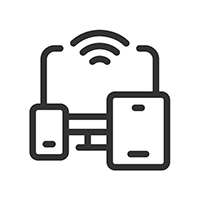 Once devices are authenticated, configured, installed and connected to the network, you need to be able to control them remotely. In most cases, the behavior of devices will be established in the provisioning and authentication phases to automate the device’s processes. For example, you can launch processes such as turning on frost fans for crop management, establish edge computing functionality, wake-up and reporting behaviors and sensor and gateway communications.
Once devices are authenticated, configured, installed and connected to the network, you need to be able to control them remotely. In most cases, the behavior of devices will be established in the provisioning and authentication phases to automate the device’s processes. For example, you can launch processes such as turning on frost fans for crop management, establish edge computing functionality, wake-up and reporting behaviors and sensor and gateway communications.
However, administrators also need IoT device control capabilities in order to access devices across the network in multiple ways over time. Examples include:
- Overriding automated processes for short-term application requirements
- Making adjustments to settings
- Remotely rebooting devices
- Ensuring each device is up and running and optimized to perform as needed for the application
Digi Remote Manager provides remote access and control to your entire device network, regardless of the number of devices or their geographic location. In addition to access to Digi devices, Digi RM enables secure, out-of-band access to PLCs and other remote devices via serial connection.
Monitoring
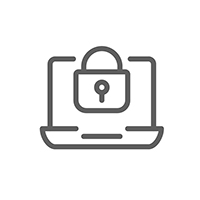 Remote monitoring of your IoT devices is one of the key objectives of IoT device management, supporting a range of application objectives:
Remote monitoring of your IoT devices is one of the key objectives of IoT device management, supporting a range of application objectives:
- System metrics: View device uptime and other events occurring across the network from a dashboard.
- Data reporting: Gain critical insights on user-defined data points. These data points can include measurements such as tank levels, the temperature of concrete pours and other sensor data. With these insights
- Notifications: Establish user-defined notifications for events to support critical decisions and predictive maintenance. To prevent critical system failures, loss of data or performance degradation, administrators need to be notified of changes across the network that can affect performance.
- Security: A key benefit of a highly integrated IoT device management platform, such as Digi Remote Manager, is the ability to both detect and remediate security breaches such as attempted device configuration changes and to provide notifications to system administrators of these events.
Diagnostics
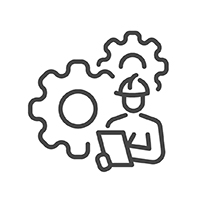 With the IoT device management processes in place that we have discussed so far, administrators have the ability to perform diagnostics on the health of the entire device network, as well as that of any individual device. These processes enable administrators to perform diagnostics from a management platform, in order to troubleshoot and remediate issues quickly and efficiently.
With the IoT device management processes in place that we have discussed so far, administrators have the ability to perform diagnostics on the health of the entire device network, as well as that of any individual device. These processes enable administrators to perform diagnostics from a management platform, in order to troubleshoot and remediate issues quickly and efficiently.
There are multiple benefits of the ability to perform diagnostics remotely:
- Identify system issues rapidly, to prevent costly downtime
- Remediate issues remotely, including the ability to access devices that are offline “out of band”
- Avoid costly “truck rolls” to troubleshoot and fix issues
Software Updates
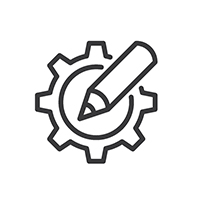 IoT devices today are smart, and have sophisticated software-defined attributes to manage their functionality and security. Software brings IoT devices to life, establishes their role in the device network, enables their edge compute functionality, and manages prevention of viruses and cyberattacks.
IoT devices today are smart, and have sophisticated software-defined attributes to manage their functionality and security. Software brings IoT devices to life, establishes their role in the device network, enables their edge compute functionality, and manages prevention of viruses and cyberattacks.
To keep IoT devices functioning optimally, administrators need the ability to send firmware updates to any or all devices across the entire network at any time. Here are a few examples of software updates:
- Install manufacturer firmware updates for functionality enhancements and bug fixes.
- Send security patches to ensure the security defenses are up-to-date.
- Update coding of the device functionality with Python to adapt to changing business requirements.
- Increase the frequency of status reporting to keep closer tabs on a sensitive process or reduce reporting frequency to save on network bandwidth and cost.
Maintenance
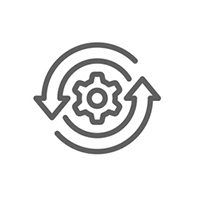 The ability to maintain visibility across the device deployment, get alerts, and troubleshoot issues, is one of the most important aspects of IoT device management. In IIoT (industrial IoT) deployments, devices may have a service life of a decade or more. So it is inevitable that feature enhancements, security patches and firmware updates will be needed over time.
The ability to maintain visibility across the device deployment, get alerts, and troubleshoot issues, is one of the most important aspects of IoT device management. In IIoT (industrial IoT) deployments, devices may have a service life of a decade or more. So it is inevitable that feature enhancements, security patches and firmware updates will be needed over time.
Device maintenance is the ongoing effort to keep devices tuned to the needs of the business application, and goes hand-in-hand with monitoring, diagnostics and software updates. All of the examples provided in the sections above describe the complex need for an IoT system management solution like Digi Remote Manager, in order to perform ongoing monitoring and maintenance of the IoT application.
Without a strategy for performing these ongoing maintenance tasks, teams are forced to find a way to perform these updates manually. In many cases the result is that device deployments lapse in security and fall out of compliance.
Integration with Cloud Platforms and Business Processes
 Many IoT applications are designed to provide critical data to analysts, operators and business decision makers within an organization. These business activities require the IoT device management platform to integrate seamlessly with third-party IoT cloud providers, such as Amazon Web Services, Microsoft Azure and Google Cloud. This can be accomplished with the help of IoT device management protocols and web services such as MQTT and HTTP.
Many IoT applications are designed to provide critical data to analysts, operators and business decision makers within an organization. These business activities require the IoT device management platform to integrate seamlessly with third-party IoT cloud providers, such as Amazon Web Services, Microsoft Azure and Google Cloud. This can be accomplished with the help of IoT device management protocols and web services such as MQTT and HTTP.
We will use Digi Remote Manager as an example, which is cloud-service agnostic, and allows you to integrate with those third-party services quite easily using a RESTful web services interface. Digi RM provides IoT communication management tools, facilitates connectivity with your third-party services and sends the right data to the right destination. For example:
- Digi RM can act as a facilitator between edge devices such as cellular routers and gateways to your third-party cloud service for real-time business intelligence.
- It can push updates and code from third-party applications out to your entire installation of deployed devices.
- Digi RM can facilitate the migration of your entire deployment to a different third-party cloud application for a seamless switchover, if you choose to change platforms.
For additional information, including the use of the MQTT protocol (low bandwidth) and HTTP protocol (higher bandwidth), see our white paper, IoT Device Management: Secure and Scalable Deployments with Digi Remote Manager.
Contextual IoT Device Management
IoT deployments range wildly in their size, complexity, objectives and requirements. But one thing is certain. As the capabilities of IoT devices and networks increase, so does the need for sophisticated and targeted functionality from the devices across the network. Contextual IoT device management is about addressing the specific needs and variables of a particular application, and is made possible by IoT device management platforms.
 Here are a few high-level examples illustrating the need for contextual IoT device management, due to varying data needs and device functionality requirements:
Here are a few high-level examples illustrating the need for contextual IoT device management, due to varying data needs and device functionality requirements:
- Agriculture: IoT devices in farming applications must deliver a range of data as it is changing, from temperatures and moisture conditions to the locations of vehicles and even movable irrigation systems.
- Solar systems: These devices don’t move geographically, but many solar panels today adjust positioning according to position of the sun and the weather conditions.
- Electric vehicle charging: EV charging stations can be integrated with applications that enable drivers to find them. They can also report on their usage, whether they need servicing and more. Each of these types of data must be sent to different users for different purposes.
Capabilities and Limitations of Basic IoT Device Management
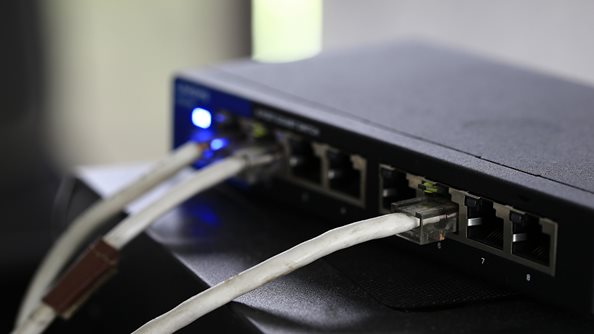 Basic IoT device management enables IoT network managers to establish and manage a number of common IoT connectivity and functionality requirements that are of concern to nearly all IoT applications.
Basic IoT device management enables IoT network managers to establish and manage a number of common IoT connectivity and functionality requirements that are of concern to nearly all IoT applications.
Range
Communication range is a function of the device’s built-in power management and the antennas integrated into the device or attached externally. Communication range is therefore in the control of the organization, without any advanced IoT device management tools, but testing and reporting on range are much easier with an IoT device management platform.
Bandwidth
Bandwidth in a deployed IoT application is a function of the device’s built-in capabilities such as the type of modem (e.g. 3G, 4G LTE or 5G), and the available network. Advanced (contextual) IoT device management tools are not required to manage this functionality, but they provide the ability to test bandwidth and gain visibility across the network.
Battery Life
Battery life is a function of the device design and its application. A deployed device in a remote oil well, for example, will use battery power each time it sends data. Edge computing techniques can help to optimize these processes, and are most easily managed with advanced IoT device management solutions like Digi Remote Manager.
Capabilities and Benefits of Contextual IoT Device Management
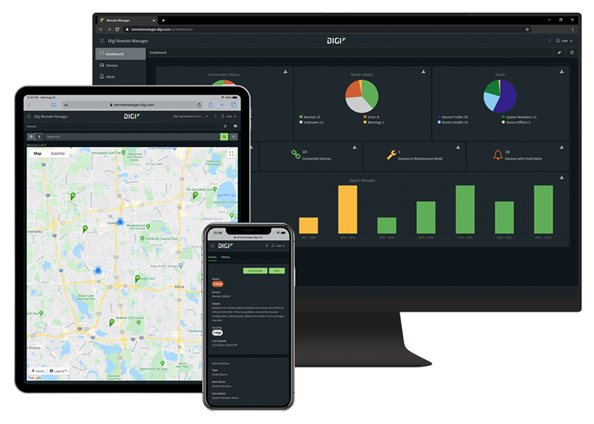 Digi Remote Manager, provides the critical capabilities needed to deploy, manage and optimize the functionality of your device network with ease. Here are some of the key benefits:
Digi Remote Manager, provides the critical capabilities needed to deploy, manage and optimize the functionality of your device network with ease. Here are some of the key benefits:
- Remote management: Each device on a network plays an important role, even when the network devices number in the thousands or millions. Contextual IoT device management provides the ability to manage and update any of those devices anytime to troubleshoot issues or enhance functionality.
- Security: Integrated security tools can detect and remediate security breaches, while also providing 24/7 visibility and reporting on these incidents from a management interface.
- Scalability: The ability to grow the size of a deployment is dependent on the organization’s ability to remotely monitor and manage devices from a central management interface, or from a mobile device in the field. See our ElectriCities case study for an excellent example.
- Network optimization: To optimize data usage, battery life and functionality of devices at the network edge, organizations need tools to deploy software changes.
Be Smart About Managing Your IoT Devices

Whether you’re planning an IoT project or looking to upgrade your deployed device network, IoT device management is a critical component in your planning. The capabilities of an IoT device management platform can save time, reduce costs, improve security, and provide the critical monitoring and management tools you need to keep your devices online, up-to-date and optimized for your specific application needs. And all of these benefits lead to the best possible ROI for your investment.
To learn more about how to securely manage your IoT device deployment with sophisticated IoT device management software, solutions and services, contact Digi at www.digi.com/contactus. Or visit shop.digi.com to start a free trial of Digi Remote Manager.
Note: This article was initially published in July of 2020, and was updated in August of 2021.